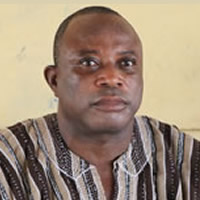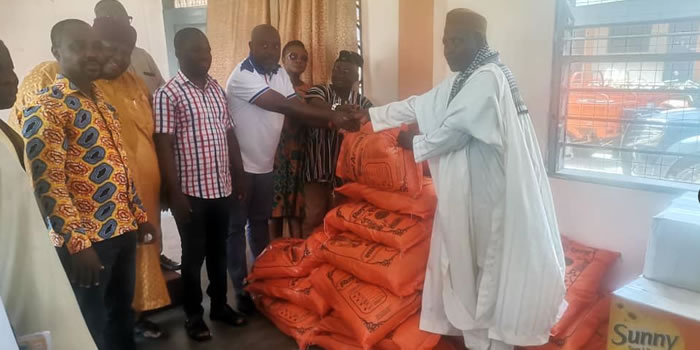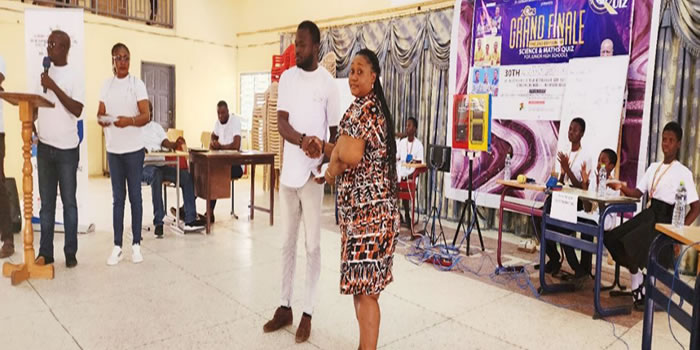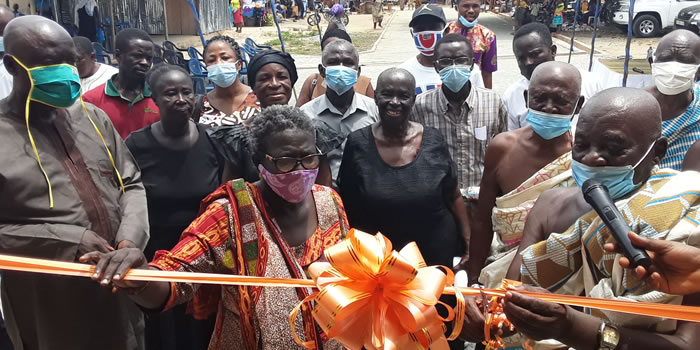

POPULATION
The projected population for New Juaben North for 2018 is 60,879 with males constituting 29,105 (48%) and females 31,774 (52%) with a growth rate of 2.1%. The municipality has more rural communities, however, the population is concentrated at Asokore, Effiduase, Oyoko and Jumapo. Thereby majority of the population in the municipality live in urban areas (83%).
Population Structure
The population pyramid of the municipality has a broad base consisting of large numbers of children and a conical top of a small number of elderly persons. This is an indication of the population having a youthful structure. The dependency ratio for the district is 66.0 which implies there are 66 dependents (children and old age) for every 100 people in the working ages.
Child dependency ratio is 56.0% higher, while old age dependency ratio is 10.0%.
Implications for Development – Population
Population size, structure and distribution has both social and economic implications.
The population size influences the level of provision of social services such as schools, hospitals, water and housing. Hence, the need to increase these facilities to meet the growing population.
The increase population density in the major towns such as Effiduase, Asokore and Oyoko could result in pressure on existing facilities. It could as well lead to the increases in the costs and scarcity of land. With the advent of urbanization, the traditional joint family or extended family system will inevitably undergo transformational change. Nucleated family system will gradually come to stay due to high standard of living.
Congestion in the major towns has both sanitation and health implications. Sanitation if not properly manage could be grounds for spread of diseases. Security is a threat in the big towns as there is high crime rate due to the active labour force and unemployment. With the population characterized by a large segment of persons below 20 years and high child dependency, there is the need for job creation for the working class so as to improve their income. Social interventions such as the Capitation Grant, the Ghana School Feeding Programme, LEAP programme among others should be expanded in order to relieve the working class of their burdens.
MIGRATION
Migration is vital to socio-economic development and planning in the municipality. Migration out of the municipal decreases the population whereas migration into the municipal increases the population size. The movement of people into the municipal is influenced by factors such as; population size, system of governance, social structure, available land, climate, vegetation, size and structure of the economy, and level of technology
The 2010 PHC revealed that majority of migrants moved into the municipality. The largest number of migrants moved from the Volta region followed by Greater Accra region, Central with the least migrants from the Upper West region. A number of these migrants moved in for economic reasons, employment and education. The municipal is well-endowed in terms of good climatic conditions, proximity to the national capital, hospitality services and educational infrastructure therefore attracted migrants.
Implication for Development- Migration
Migration has development implications.
For those who have moved out, the remittance the emigrants send home alleviates poverty through increased income. This stimulates the economy thereby increasing revenue generation of the Assembly. On the other hand, immigration increases the supply of labour and productivity. Despite the benefits, immigration can become an economic burden as it can lead to competition for jobs with the natives, heavy burden on public services and increased crime rate.
Migration further affects the environment, democratic values, demographics and security. There is therefore the need for the Assembly to plan and provide services to areas such as Effiduase, Asokore, Jumapo, Oyoko, Akwadum which are more urbanized.
Migration is gradually resulting in increased demand for land, pressure on infrastructure and haphazard development.
GENDER EQUALITY
The societal roles and responsibilities associated with the various sexes do not differ from situations which prevail in other communities in the southern part of the country. Men are generally heads of families and clans. Moreover, they engage in occupational activities such as farming, fishing and trading for the upkeep of their families. They also help to protect their family names and families.
On the other hand, women are responsible for household chores like cooking, sweeping, taking care of children and fetching water for the up-keep of their families. They have farms and also help their male counterparts in farming activities. Boys help their parents in fetching of firewood, farming and other household chores whilst girls assist in domestic chores like cooking, sweeping, fetching water and taking care of the younger ones. Responsibilities accorded to boys and girls are not restricted to either sex especially when there are only boys or girls in a particular family.
Power in the society is generally skewed towards men. This makes them more influential and therefore controls most resources. The hierarchy of decision-making in the traditional setting, which starts from the Chiefs, Sub-chiefs, heads of clans and families, is predominantly dominated by males. This trend adversely affects women participation in decision-making processes in the society. This is also manifested in the composition of the general assembly, where there is a total of twenty (20) elected males as compared to just one (1) female.
However, the human resource analysis of the Assembly is different as there are equal number of males (55) and females (55) headed by a female Municipal Chief Executive. The female-male ratio is therefore 1:1. It can also be noted that the enrolment of boys are higher than those of the girls at all levels of education.
Implication for Development
Placing women in the centre of development agenda can increase efficiency in the management of resources. Despite government’s policy to increase women’s participation in politics, significant gender gaps still remains in the General Assembly composition in the municipal. There is therefore the need to close the gender gap in the municipal area by ensuring that the assembly’s projects and programmes incorporates gender components; that is gender mainstreaming activities in development plans and budgets.
SETTLEMENT SYSTEMS
Land Uses
These settlement patterns in the municipality exhibit high concentration of buildings at the major towns thus, they are more developed than the other settlements. Urban settlements in the municipal are mostly engaged in trade and service occupations, while rural settlements mostly have agriculture occupations. Additionally, the settlement pattern is more dispersed in the rural areas and nucleated or compact in the urban areas.
The major towns in the municipal area are experiencing tremendous growth and uncontrollable development. Haphazard unauthorized citing of structures are common in Effiduase, Asokore Oyoko among others. A number of communities are without layouts and planning schemes. There is therefore the need to prepare planning schemes for these communities.
The availability of facilities such as hospitals, police stations, banks and markets are skewed towards the urban centres. Effiduase and Asokore has facilities such as Hospital, Police station, Banks etc. The other smaller communities lack these facilities because it is not economically viable to operate in those lesser population areas.
The Municipal capital is the hub of commercial and industrial activities attracting a huge number of migrants in search of employment and other social opportunities. The disparity in the provision of infrastructure and services and distribution of resource has led to relative congestion of business in the central business district (CBD). This has negatively affected the growth of the other towns in the municipality.
A. Residential Land Use
This land use covers living areas in the municipality are predominantly occupied by housing facilities. A total of 50 percent of the land in the municipality is occupied by residential facilities. These residential facilities are further stratified into first class, second class and low income residential areas.
B. Commercial Land Use
Approximately 20 percent of the total land developed in the municipality is occupied by Commercial activities. These commercial activities are mainly concentrated at the Center of Effiduase.
C. Education and Land Use
Education occupies about 10 percent of the land use in the municipal. Education facilities range from Pre- school to primary school, Junior High School, Senior High School, Vocational and Technical, Training College and University.
Transportation Infrastructure
Road transport is the major form of transport in the municipal. The roads are classified as follows:
Trunk Roads under the jurisdiction of Ghana Highway Authority
Urban Roads under the jurisdiction of Department Of Urban Roads and
Feeder Roads under jurisdiction of Department of Feeder Roads
The trunk roads are Effiduase-Tafo, Effiduase- Suhum which are in good condition. The feeder roads are not surfaced which are not motorable especially during the raining seasons. There is also a railway network at Asokore, but not operational.
There are a lot of options for travelling and movement. These are; Taxis, Okada (Motor bikes), Tricycle, vans (Trotro) and Metro Mass Transport services.
Date Created : 3/27/2019 6:56:42 AM











 facebook
facebook
 twitter
twitter
 Youtube
Youtube
 +233 593 831 280
+233 593 831 280 0800 430 430
0800 430 430 GPS: GE-231-4383
GPS: GE-231-4383 info@ghanadistricts.com
info@ghanadistricts.com Box GP1044, Accra, Ghana
Box GP1044, Accra, Ghana